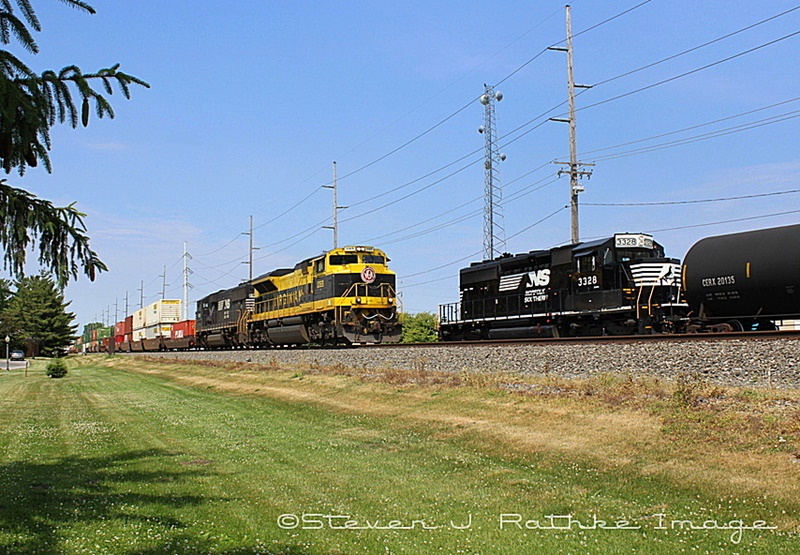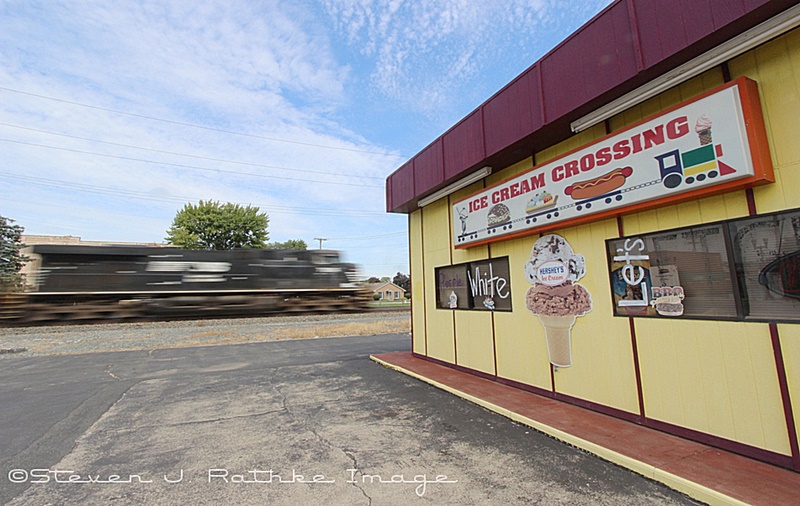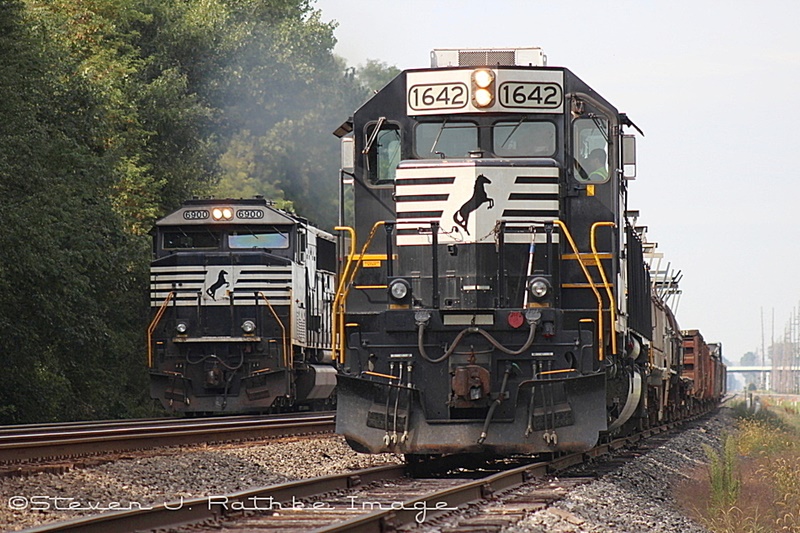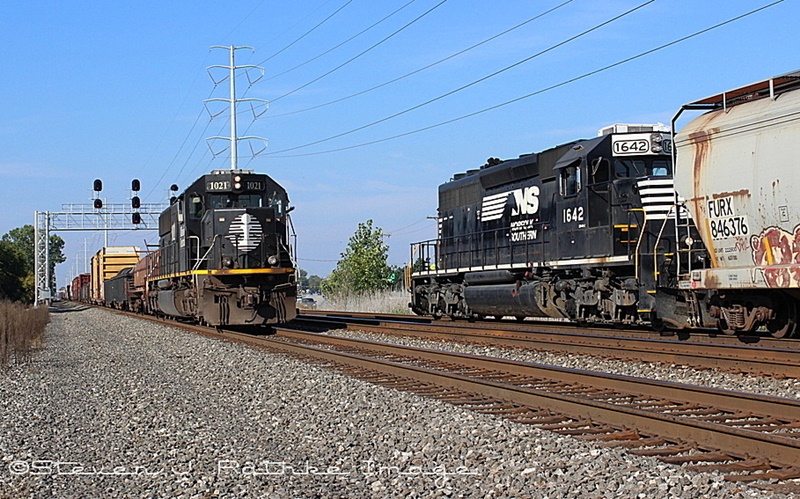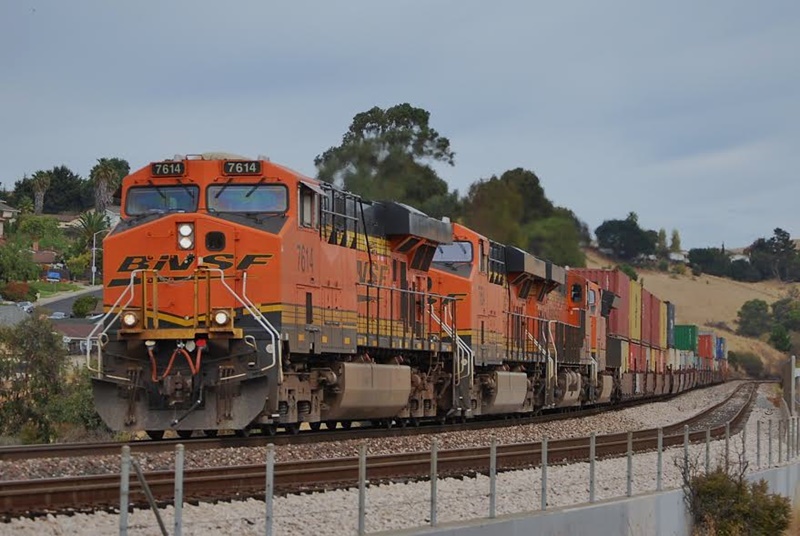
|
Once a common sight on every railroad, the local is becoming a rarity. On a Class One carrier, they are few and far between now. Don't believe me, then try to photograph one on your next trip track side. Consider yourself fortunate if you do! The explanation for their demise has been the topic of many yard shanty discussions (some of which turned pretty ugly). Personally, I believe the local is disappearing for mainly two reasons. First, many smaller "mom and pop" companies that once received or shipped a boxcar or two a week have closed. There are hundreds of ripped out switches leading to tracks overgrown with weeds that will testify to this sad fact. Second, I believe the majority of carriers find locals to be a necessary evil. It is much simpler and profitable to run long trains over the entire division that never stop other than for a change of crews. Even if a local services a major customer that ships or receives many cars per week, the train can still be considered a nuisance. When a local is out on the mainline, the dispatcher is constantly changing and updating the routing of other trains to run around a stopped local. On a single track line, the local has the potential to temporarily shut the main down. On a high volume double track line, it is an every day occurrence to have trains running in both directions on both tracks. On the local that I currently work, the dispatchers are excellent. They do their best to keep us moving, often bending the rail to bounce us in and out of sidings. Depending on track work and train frequency, there are occasions where the dispatcher has to keep both tracks open. When push comes to shove and something has to clear up the mainline, it is normally the low priority local. While some of my coworkers refer to this as being "stuck in the penalty box" or "put into a timeout," I call it "doing time." In the summer months during the peak track maintenance season, we polish the rust of off siding tracks almost daily. Depending on the location of the siding, this is not always a bad thing. We have several sidings that pass directly through small towns. I must say that it is refreshing to be able to get off of the engine and grab a coffee in mid morning, or an ice cream in the afternoon. Swanton is a small town located 20 miles west of Toledo. On Tuesday and Thursday, we take the siding into town to service a customer who makes foam for seats. There are some great vantage points in Swanton, all within a few blocks. With our work complete, we are waiting for one more westbound to clear and follow it out of town. While "doing time", I join local rail fans track side to shoot NS24Z as it blows by at 59MPH with the Virginian Heritage unit leading.
Having a sweet tooth, The Ice Cream Crossing in downtown Swanton is a favorite stop. In addition to shakes and other frozen treats, they also serve up great chili dogs, burgers, and fries. An added bonus is the restaurant makes a awesome backdrop for photos. Sadly, the shop closed this year. The new owners have big plans which is great news for Swanton residents and train crews alike. On the downside, the name will change and sign will come down. With a GEVO leading, NS26W blasts by the Crossing at 60mph carrying UPS trailers for Pittsburgh.
At the east end of the Swanton siding, the scenery is completely the opposite from the west end. It is remote and accessible only by driving along the right of way. Over the coming months, the north side of the siding (right of train) will take on a completely new look. Norfolk Southern is building a staging yard to be used for coal trains bound for the Detroit area. Construction crews are currently working on grading the former farm fields and installing drain pipes. We have been waiting on the siding for 3 eastbounds to pass before we get the light. The third train, NS16N, passes us with the #6900 leading, the original and Class unit for the "Unibrow" rebuilds.
Black and White in both directions! We are waiting at CP295 for 2 westbounds to pass as eastbound train 14N struggles east with a lone IC SD70 for power. Before hiring on the railroad, my wife and I bought our first home and it was just 30 or so yards south of the tracks here. Talk about fanning 24/7! After becoming an engineer, I have many found memories of flying through this interlocking at speeds up to 70mph and waving to my wife as she and neighbors stood on the deck.
Hope you enjoy the article!
|
News And Photos From Our American CRO Contributors.
NEW JERSEY TRANSIT CRASH:
New Jersey Transit Train 1614, with an NJT Comet V cab car on the head end, departed from Spring Valley at 7:23 AM and was due to arrive in Hoboken at 8:38 AM. The NJT cab car came to a halt between the terminal's indoor waiting area and the end of the platform. A metal and glass train sh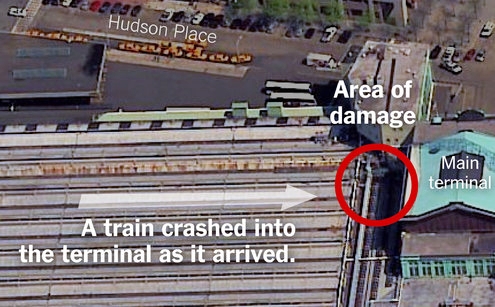 ed collapsed. Most of the injuries occurred in the lead car or to people struck by collapsing debris inside the station. Many people were trapped on the train or in the debris. The single fatality was a woman in her 30s who was on the platform. NJT is currently installing PTC system-wide, but does not currently have plans to install it within Hoboken Terminal's massive and complex interlocking plant. NJT applied for and received from the FRA what is known as a Main Line Track Exclusion Addendum (MTEA) to its PTC Implementation Plan (PTCIP) for Hoboken Terminal, where the existing ATC (Automatic Train Control, cab signal with speed control) system enforces an MAS (maximum authorized speed) of 20 mph. PTC would have provided a zero-speed target for the end of the platform, and would have automatically made a penalty brake application if it calculated and determined that the train's 20 mph-to-0 mph braking curve was insufficient to stop the train just short of the end-of-platform bumping block. ATC does not calculate and enforce braking curves. (Railpac newswire)
ed collapsed. Most of the injuries occurred in the lead car or to people struck by collapsing debris inside the station. Many people were trapped on the train or in the debris. The single fatality was a woman in her 30s who was on the platform. NJT is currently installing PTC system-wide, but does not currently have plans to install it within Hoboken Terminal's massive and complex interlocking plant. NJT applied for and received from the FRA what is known as a Main Line Track Exclusion Addendum (MTEA) to its PTC Implementation Plan (PTCIP) for Hoboken Terminal, where the existing ATC (Automatic Train Control, cab signal with speed control) system enforces an MAS (maximum authorized speed) of 20 mph. PTC would have provided a zero-speed target for the end of the platform, and would have automatically made a penalty brake application if it calculated and determined that the train's 20 mph-to-0 mph braking curve was insufficient to stop the train just short of the end-of-platform bumping block. ATC does not calculate and enforce braking curves. (Railpac newswire)
While investigators search for clues in the NJ TRANSIT train crash in Hoboken, CBS2 uncovered some startling numbers. NJ TRANSIT has 12 times more equipment failures than any other commuter railroad in the nation. So why is it such a mess? According to pundits: "One word: funding," said Janna Chernetz, New Jersey policy director for the Tri-State Transportation Campaign. Chernetz puts NJ TRANSIT's woes smack dab on Gov. Chris Christie's doorstep. She said he's slashed state funds for the nation's third busiest commuter system by 90 percent in 11 years. National Transportation Safety Board (NTSB) officials said on Sunday one data recorder recovered so far from the New Jersey Transit commuter train that crashed in Hoboken, killing one and injuring more than 100, was not functioning on the day of the accident... The locomotive's recorder has information on train speed. NTSB vice chair T Bella Dinh-Zarr said at a Sunday news conference she was hopeful the data recorder in the cab control car in the front of the train was functional. That has yet to be recovered from the crash site... According to federal data, meanwhile, New Jersey Transit trains have been involved in more than 150 accidents that caused more than $4.8m in damage to tracks or equipment since 2011. NJ Transit has paid more than $500,000 to settle safety violations. Federal Railroad Administration (FRA) information shows that NJ Transit has settled 183 safety violations ranging from employee drug and alcohol use to violations of railroad operating rules or practices since 1 January 2011. The settlement payments include about $70,000 for more than a dozen safety violations in 2014 and 2015. Statistics for the current year are not yet available
As CRO went to press, more details had surfaced. The NJT Hoboken Train actually sped up before the crash, and the Emergency Brake was applied at last second, the NTSB now Says. The commuter train's event recorder indicates that approximately 38 seconds before the crash, while the locomotive was traveling at about 8 mph, the throttle was increased from idle to the No. 4 position. Despite the station's 10 mph speed restriction, the locomotive reached 21 mph before the throttle was set back to idle and the emergency brake deployed less than a second before the crash -- too late to save the train from barreling over the bumping post, officials said. One week after the crash the locomotive and cars were removed from the Hoboken station and towed to a shop for further investigation of the equipment.
LONG ISLAND RAILROAD COLLISION
On October 8th a Long Island Rail Road commuter train had a side swipe with another train and derailed in New Hyde Park Saturday night, injuring 33 people. Of the 33 injured, seven were employees and the rest were commuters, MTA Chairman Thomas F. Prendergast said in a news conference Sunday morning. Four were seriously injured, with one person sent to have surgery yesterday and another with broken bones. The eastbound commuter train sideswiped a work train traveling in the same direction at about 9:10 p.m., causing the commuter train to derail and the work train to catch fire, according to Nassau County police and the MTA.
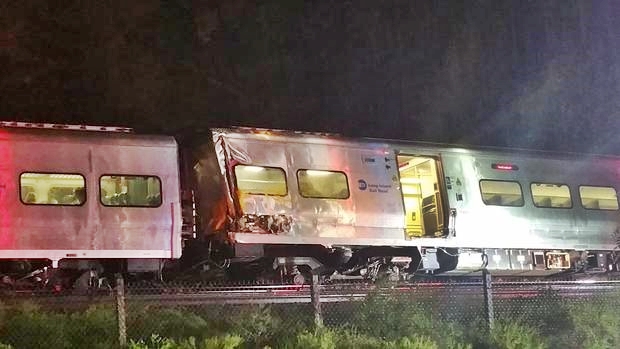
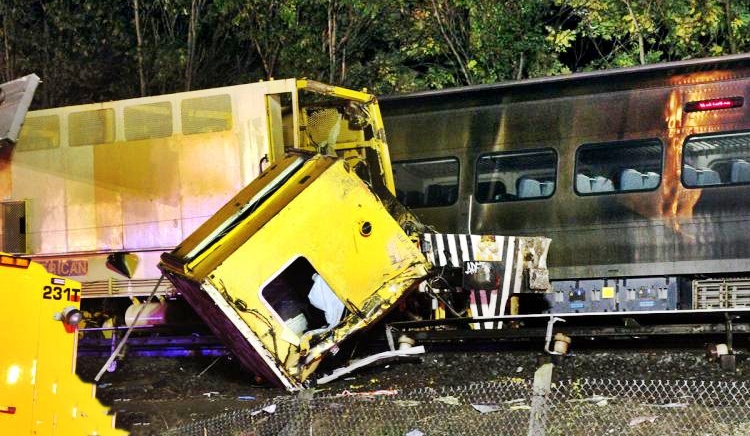
BNSF HEADON COLLISION UPDATE:
Two of The BNSF units involved in the head on collision in Panhandle, Texas in September, are seen in October in transit to the Topeka BNSF shops.. There were many units involved; with some so damaged they were scrapped on site. The three photos are by Austin Rees and Dusty McCoy taken in Kansas. It was a terrible accident for BNSF and the families.
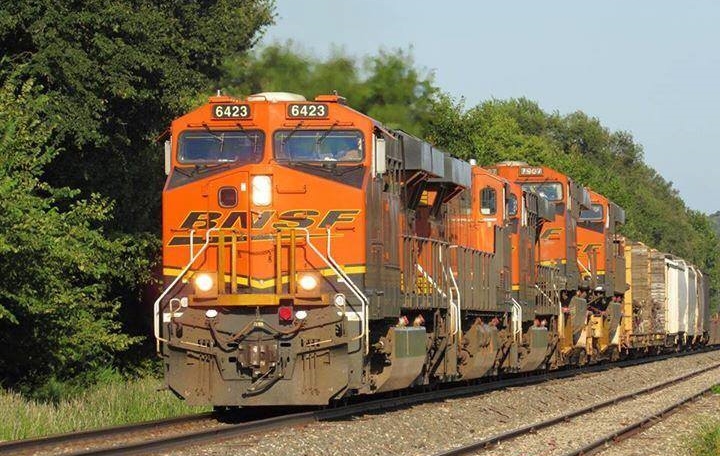
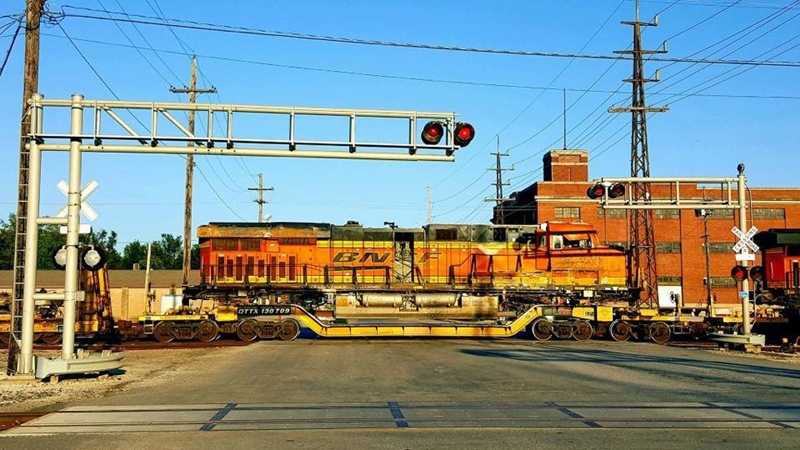
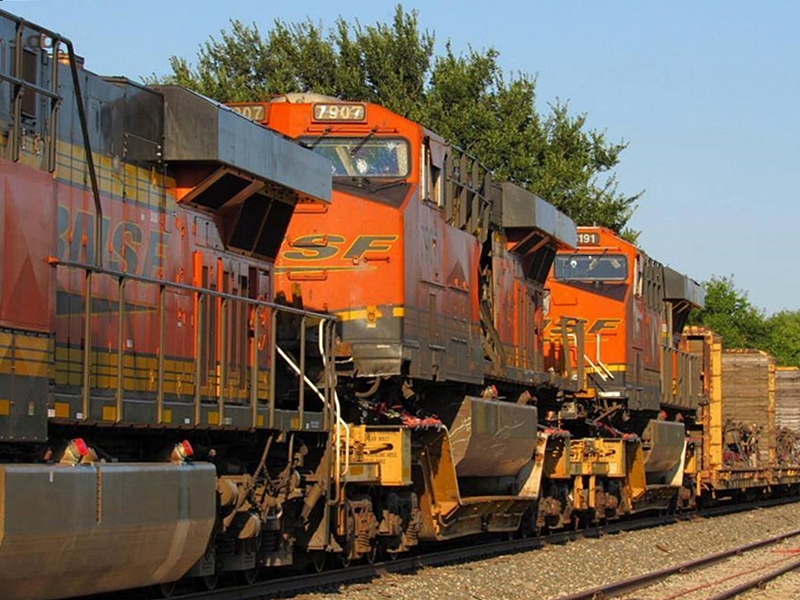
Mike Garza submitted these shots in Illinois, all taken in late-September. CBFX 1575 was passing thru on the IHB in Riverdale, Illinois on September 14th.
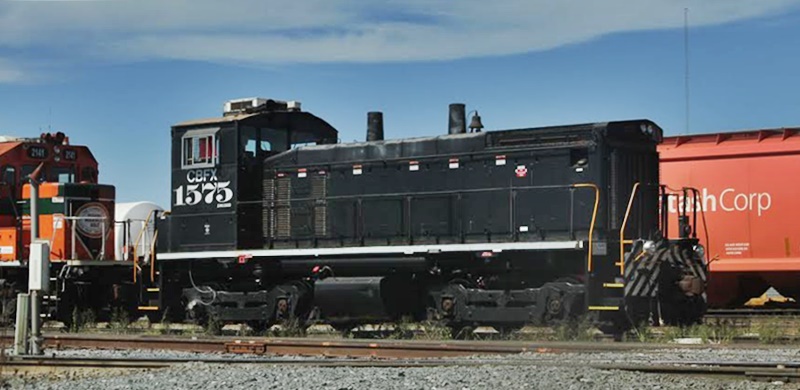
The brand new UP 9010 an SD70AH was also at the IHB in Riverdale, IL September 15th.
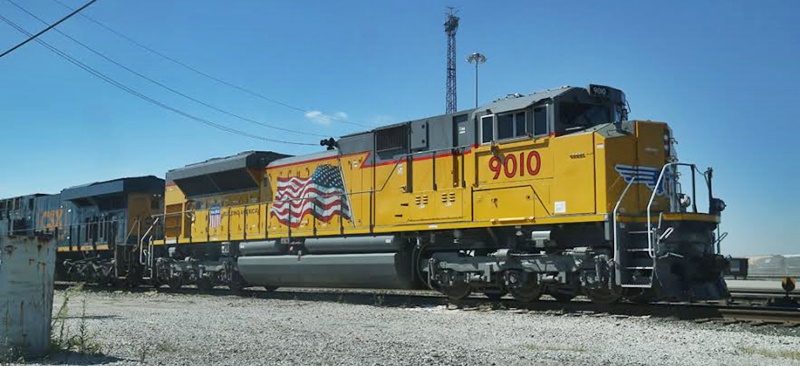
The former BNSF now the NREX 3075 was at NRE at Dixmoor, IL on September 15th.
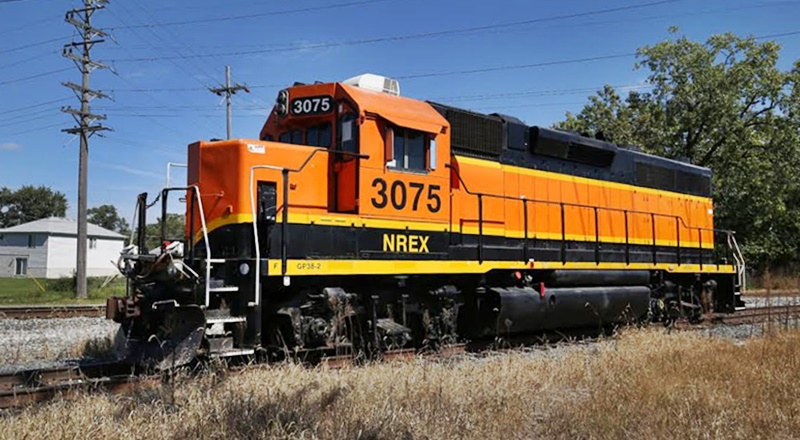
The latest order of units for Norfolk Southern, like NS ET44AC 3633 was shot on the IHB at Riverdale, IL on September 16th.
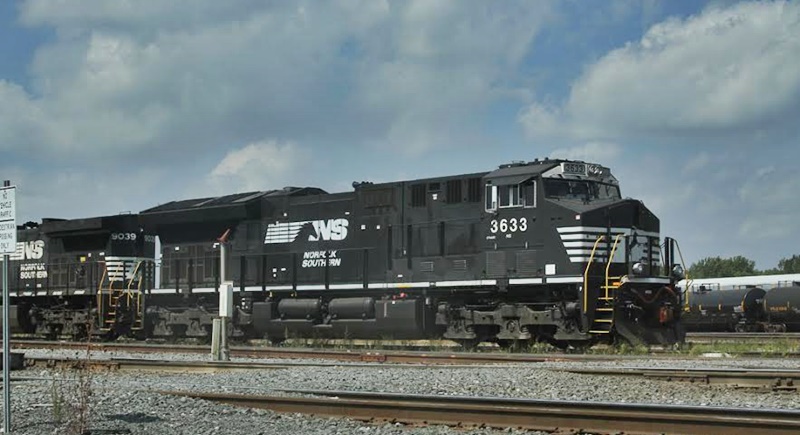
The Oregon Pacific Railroad rosters a Canadian-built GMD1 (former CN 1413) and here, OPR 1413 is out of the yard as the hard working crew of Oregon's progressive short line installs a new road crossing in the Sellwood neighborhood of Portland, OR.
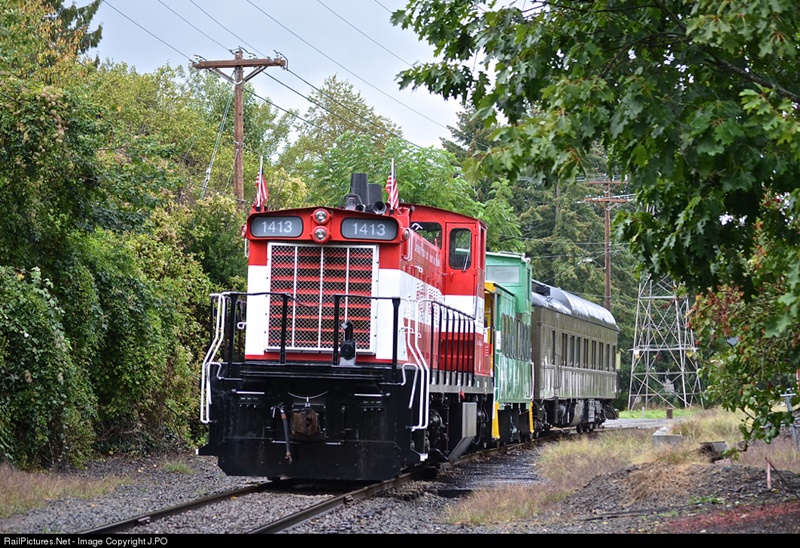
October 12th, was a nice cool and sunny day in Stockton California that warmed up later into the 80's, and was a great day to railfan. A mug shot of brand new SD70ACe 9051 that came into the valley on the 11th on a loaded grain train, and was waiting for another assignment at the UP engine terminal at Stockton, CA.
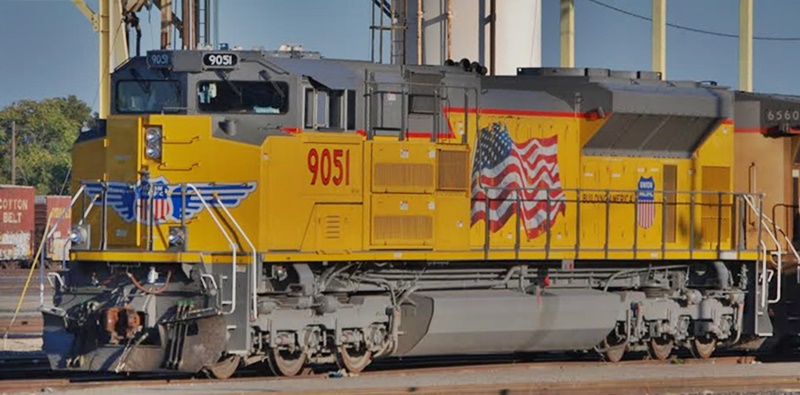
Eastbound BNSF 7904-7902-8132-8510 are rolling into Stockton, CA with the RicColv, and are bound for Mariposa for a big pickup as well with bare tables for reload.
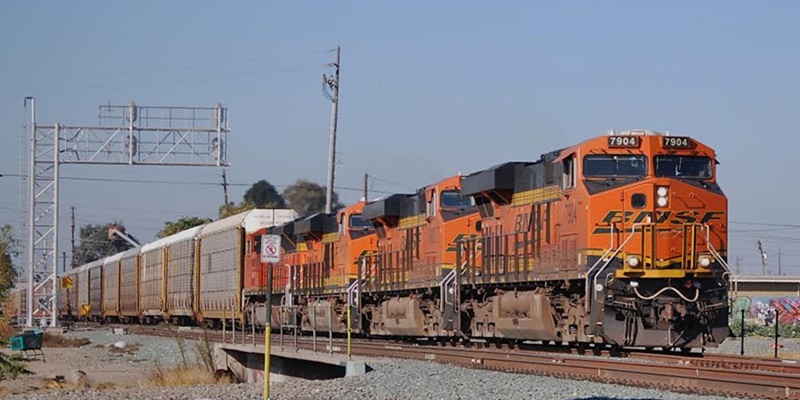
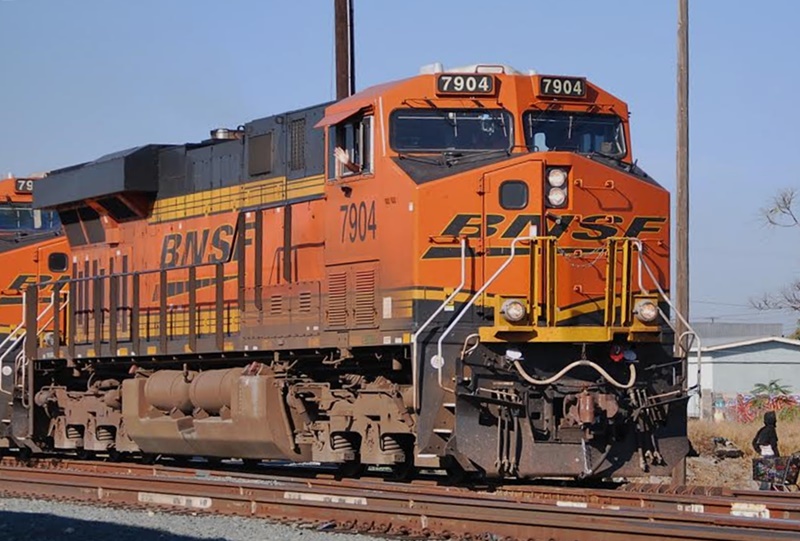
UP 717 is headed back to Stockton yard after making a one car delivery and picking up six rail cars and a short work train that tied down October 11th with four ballast cars.
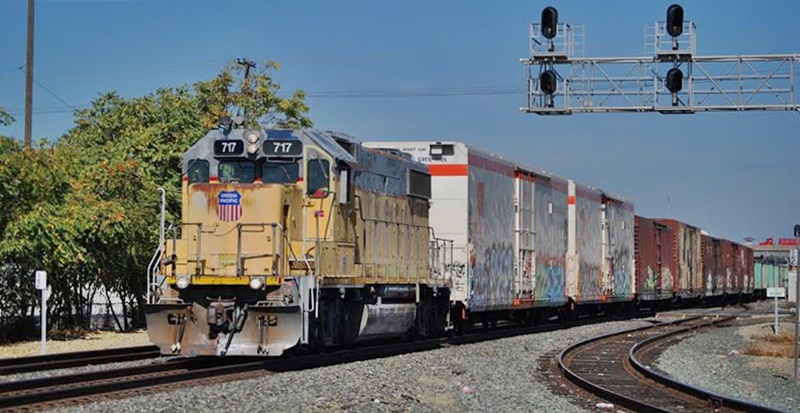
The inbound Port Job is led by BNSF 2101-3114 (both still in BN Cascade Green), which is becoming very rare, and have 25 cars for the Port of Stockton, CA.
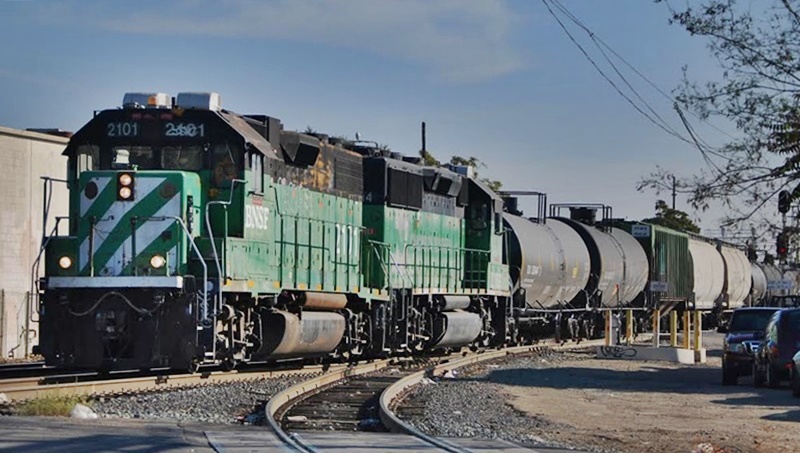
Amtrak Train 531 has a GE P42 (AMTK 13) on the lead and five cars at Rodeo, CA October 12th. AMTK 13 continues to hang around on the regions Capitol and San Joaquin passenger trains.
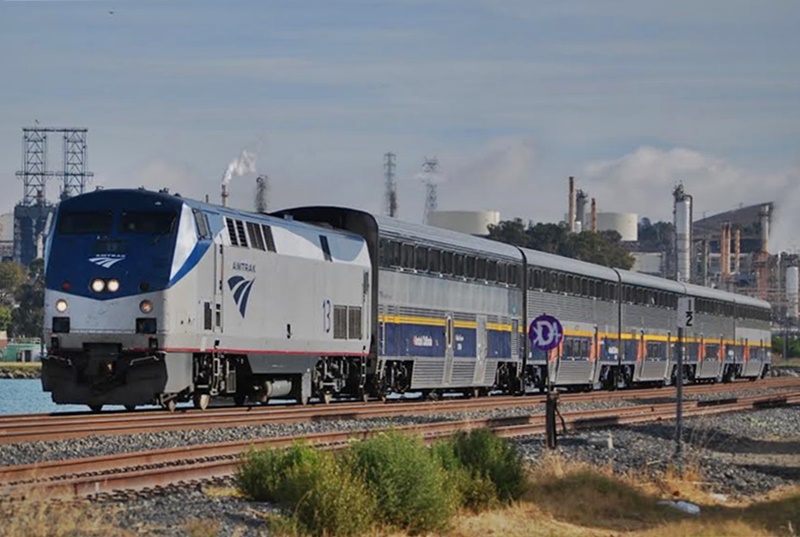
Westbound BNSF 7614 (in H-4 paint), with BNSF 7554-6737-3883 on a short double stack for OIG at Collier, CA October 12th. These were done several years ago. (move your mouse over the photo for a roster shot)
Eastbound BNSF 4110-7169-4735 on a short local at Collier, CA. A large number of DASH-9's (like this one), are now out of storage and back in service.
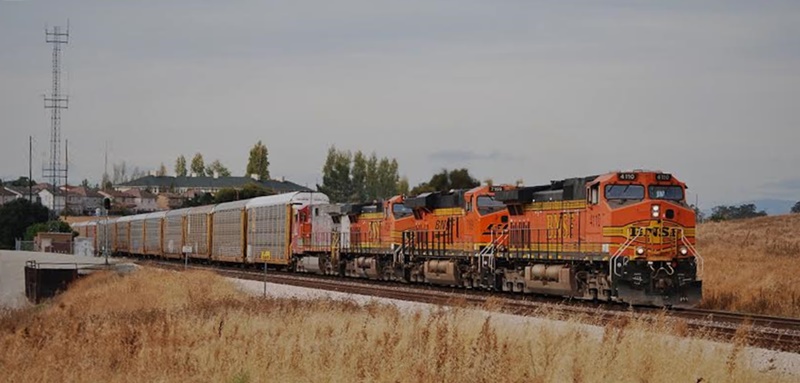
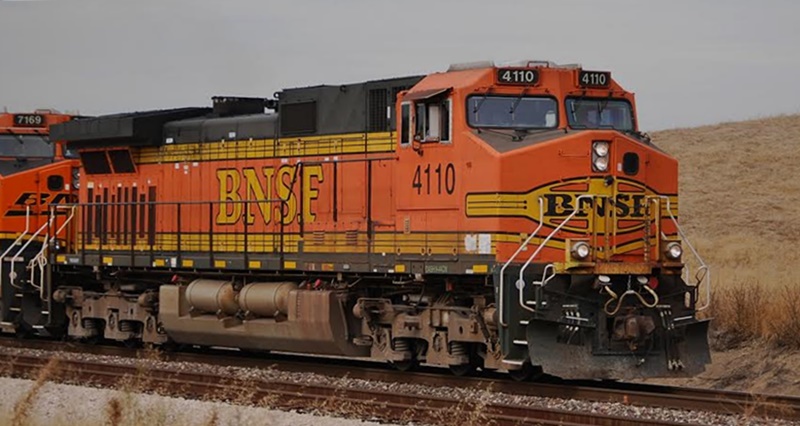
Eastbound train KOADU has UP 5826-3776-3825 with DPU's (UP 4751-7458) cut in 19 railcars from the tail end. Usually this train has at least one more AC on the lead, but today it's AC/DC/DC for lead power.
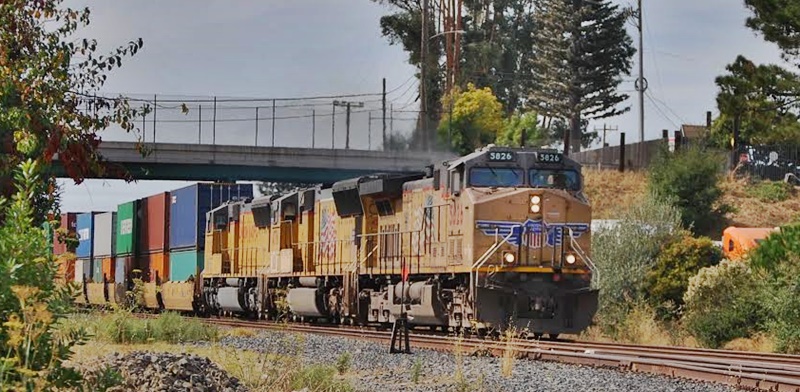
George C. Manley got a heads up, that another brand new GE ET44AC was coming his way, so he headed out to Cannon Hill which is just east of Suisun Fairfield, CA, and as it turned out, the new unit was following Train #5. Here is AMTRAK Train #5 with Amtk 6, Amtk 115 and 10 cars flying past him as it came down the grade in Cannon Hill, CA.
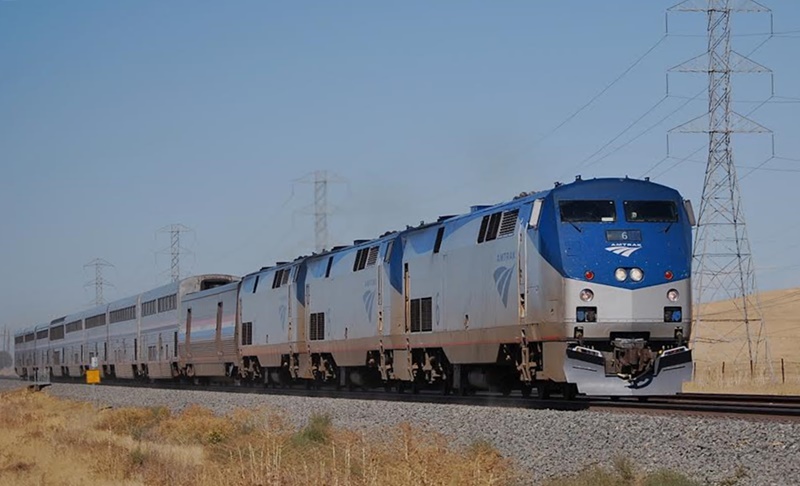
Just behind AMTK #5 was Westbound UP 2681-4884-5123 on a short double stack train. These new ET44AC's are coming to California from all directions. This GE Texas-Built locomotive group runs from UP 2670-2769.
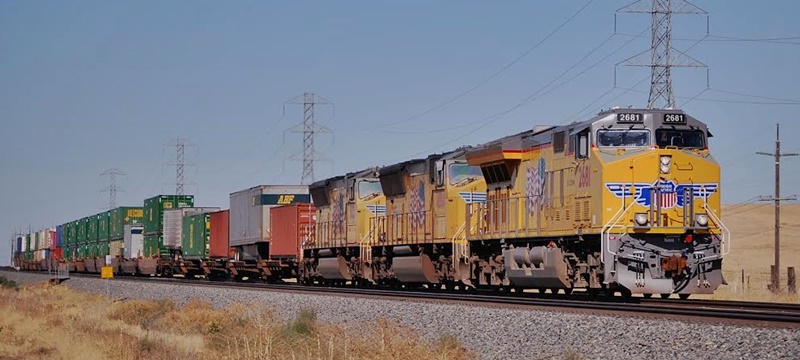
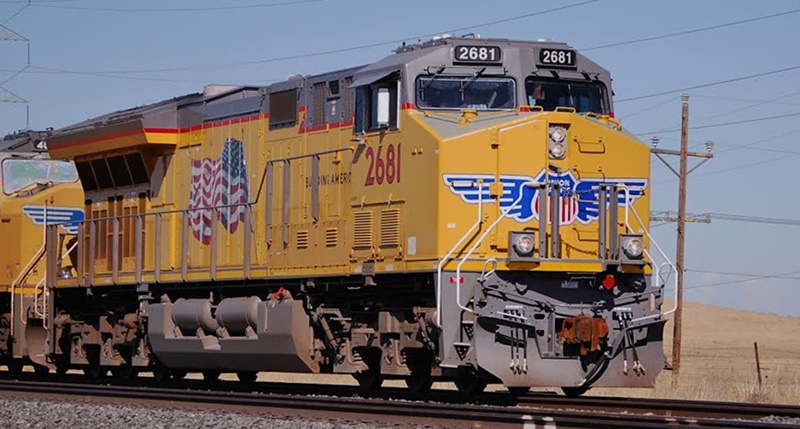
In Vancouver, WA on September 16th, Shawn Heller caught Portland and Western train 663 is accelerating past the Amtrak station with the P&W 2311, 2315, 2312 up front, with BNSF 2088 and 1948 sitting on the tail track.
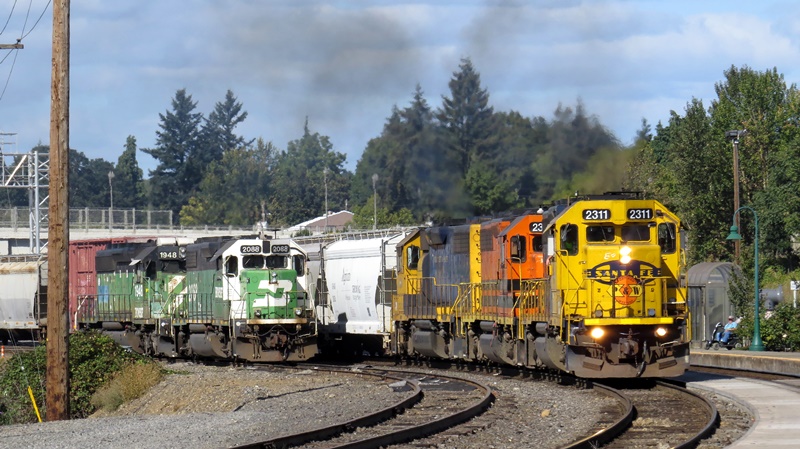
UP 7495, 3850, 8234 are on the point of this southbound stack train in Portland, OR.
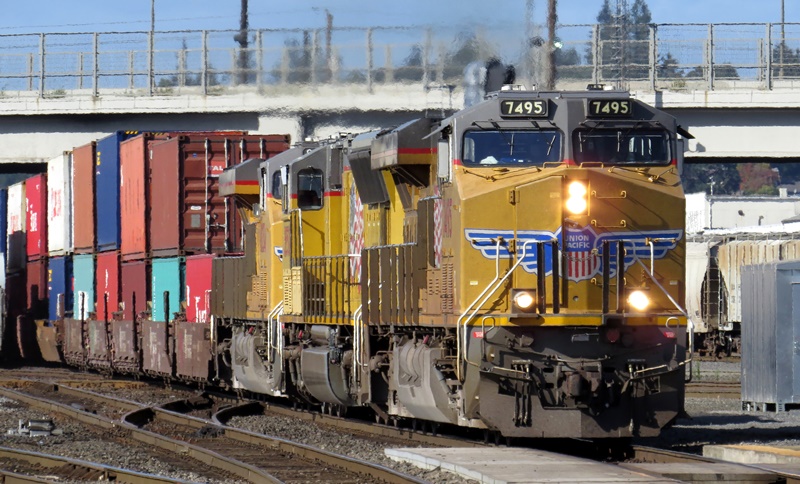
In late-September, George Fernandea and George Manley were up for different shots and passing on information via the cell phone with up dated information. They caught this colourful Northbound train with BNSF 5137, CSX 7696, (Warbonnet) BNSF 646, and BNSF 6883 crossing over from track two to track one and the connection at Keddie jct. for the connection to the UP with the Barvaw, CA.
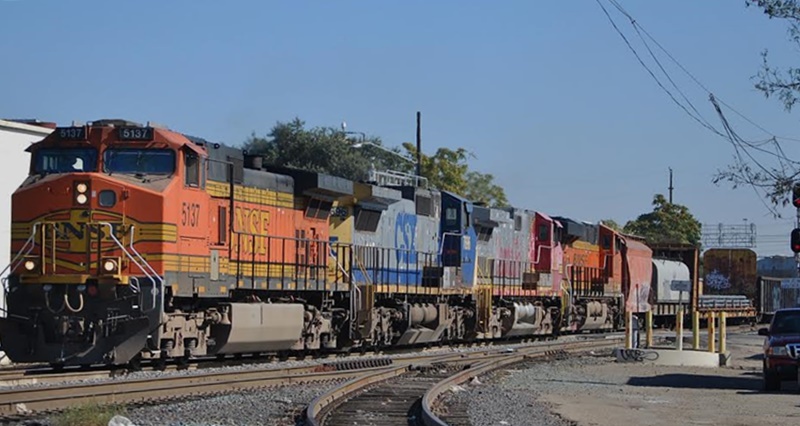
A roster shot of CSX 7696. There is always a lot of interesting pool power or run thru power finding its way on the BNSF N/S line.
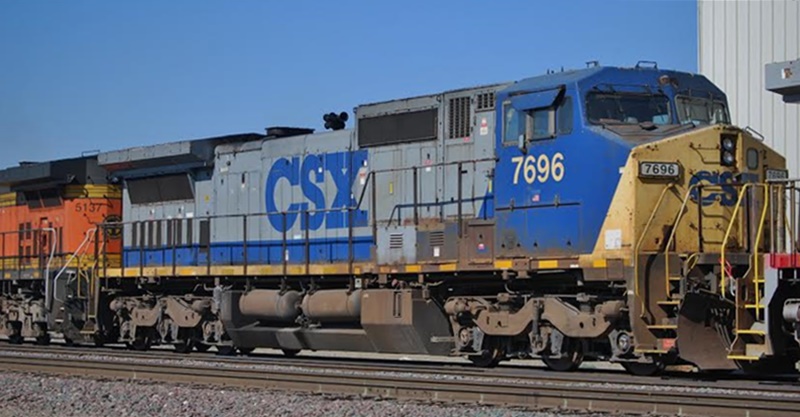
Out of storage and back on the road is Warbonnet BNSF 646, which was the third unit of a four unit set heading northbound.
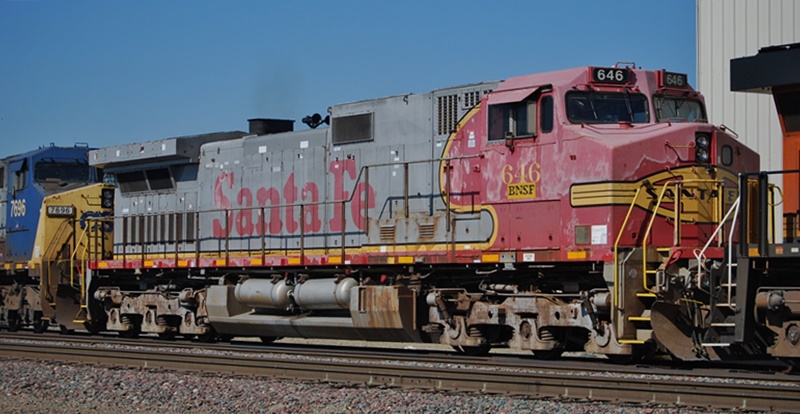
Westbound BNSF 4164 is leading a five unit team on Train Z-9, headed for North Bay, CA and the UPS trailer Facility. The train is on track two, but after crossing over the diamond, Train Z-9 will cross back over to track #1.
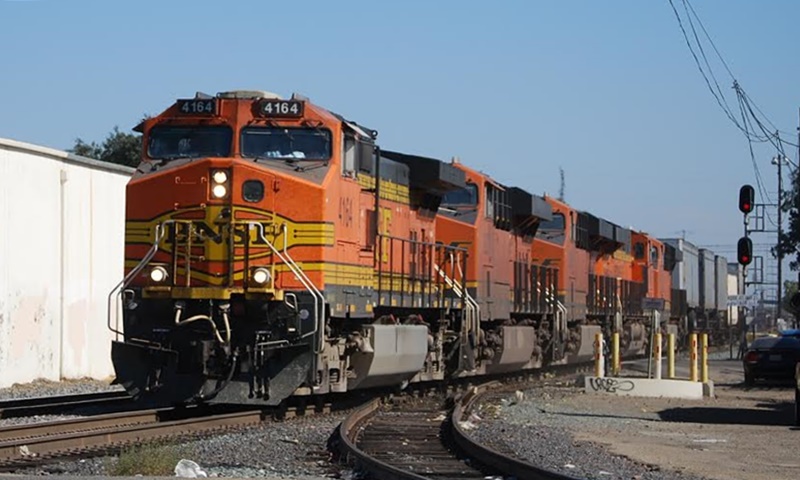
Eastbound BNSF 7929-7358 have a baretable train of empty piggy-back flats for reload at Mariposa, from UPS in North Bay, CA.
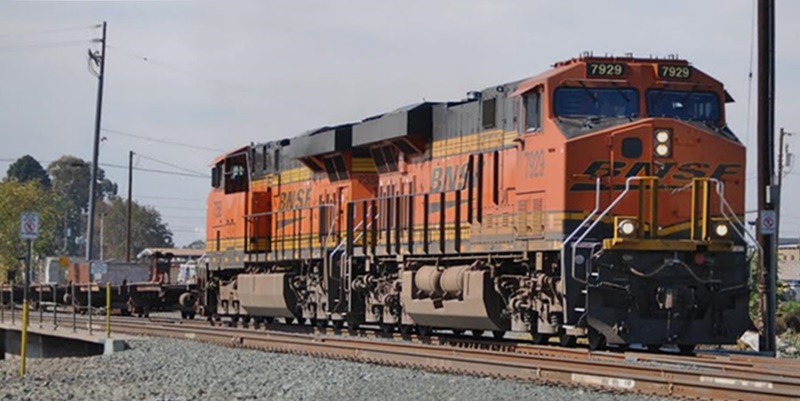
The Northbound BNSF Sacramento local is led by ex-Santa Fe blue bonnet GP60's! BNSF 171-172 and shown leaving the BNSF and are interchanging over to the UP in just a few seconds. Sadly, these Santa fe painted GP60's have been tagged by vandals.
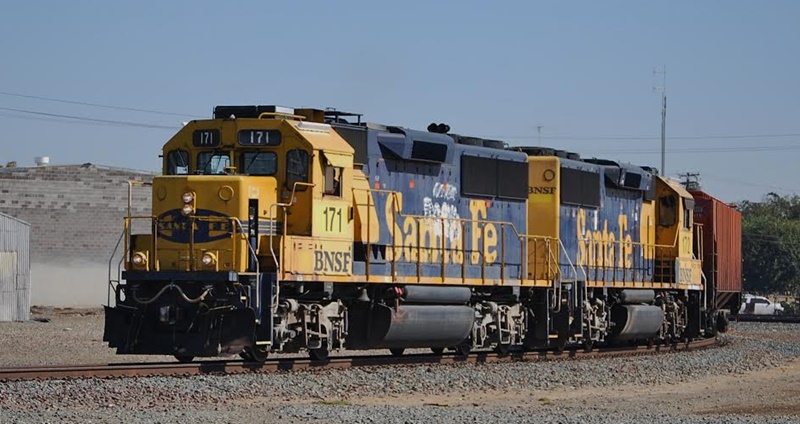
On October 11th Dan Simmering and his wife Gloria took the day to go railfanning looking for some fall colors to include in his train photos. Their first stop was near the Nisqually River at Thomson Road. While there a BNSF railroad policeman drove up and talked. A lot of highrailers get on and off of the tracks at Thomson Road, but he had never seen a railroad cop there before. He was very courteous and even shared what his computer showed for any upcoming trains at that location. While he was there, some track work was being accomplished north of the Nisqually River. A south bound, UP stack train was stopped for that work. Since the Coast Starlight was not too far away, the dispatcher asked the train if it was moving and clearing the track. The engineer on the UP train said that he was moving and heading south faster than a king salmon heading up river to spawn! He thought that was an interesting answer with a little Northwest flavor. Then, they moved south to mile post 30.0 at Marvin Road. That location is 30 railroad miles south of Union Station in Tacoma and used to be called Kyro. Even though the locomotives are the same as we have been seeing, the first train photo shows a very short stack train heading north. There were only 26 axles of well cars behind the power. This train reminded them of the Expeditor Trains that BNSF used to run between Portland, OR and Seattle, WA back in the early 1990s.
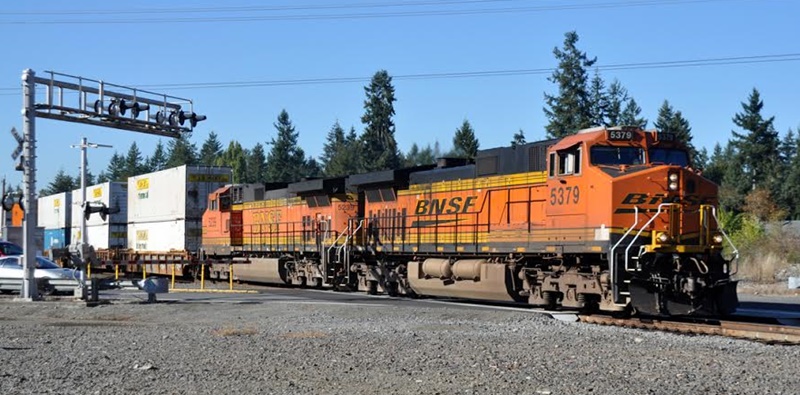
From the same location, they photographed an on-time Amtrak Coast Starlight heading to Los Angeles.
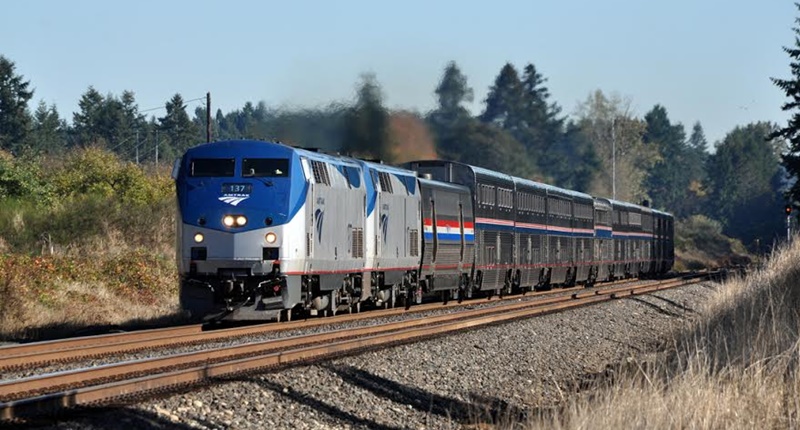
This is a north bound BNSF merchandise train rolling to a stop at Titlow to let some south bound trains clear the Nelson Bennett Tunnel. The second unit on the train was CITIRAIL 1404 with the third unit being CN 2605 repaying BNSF Horse Power Hours.
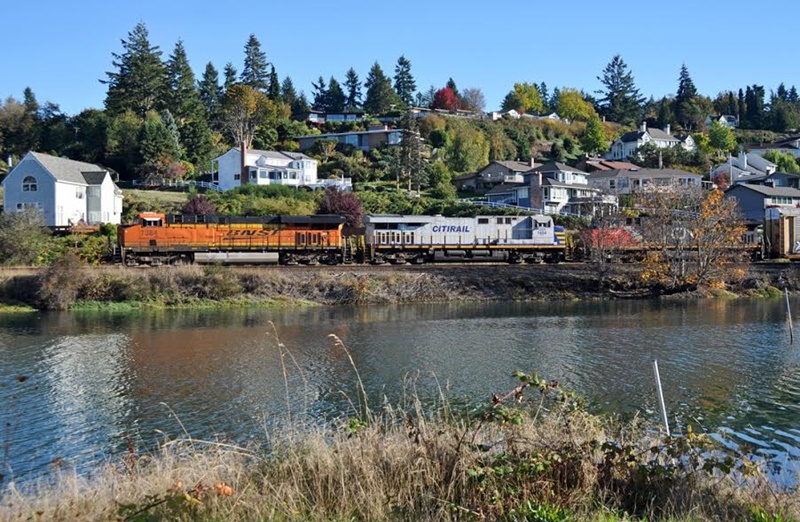
For The Eastern Railroad fans, Steve Koop Angelicola clicked Pan Am Railways MEC 600 and MEC 610 at Rotterdam Jct. NY on September 26th.
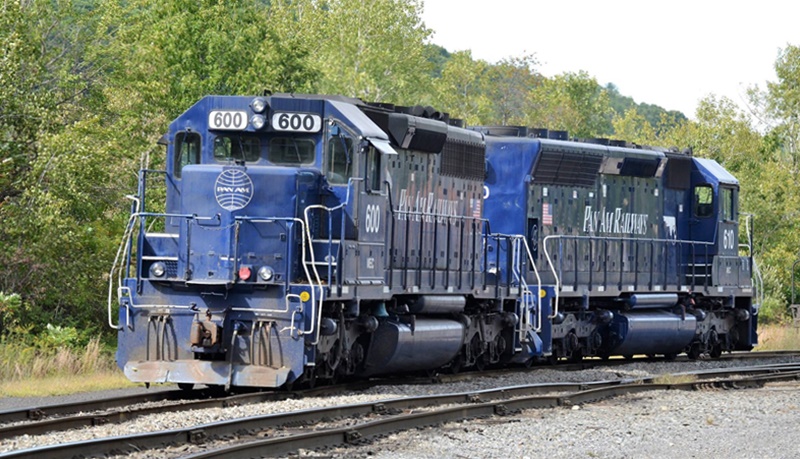
RARE CANADIAN CATCH! Dean brown caught NS H53 with NS SD40-2 3480 in the Operation Lifesaver logo heading back to Buffalo, NY at the border at Fort Erie, ON on September 18th, 2016.
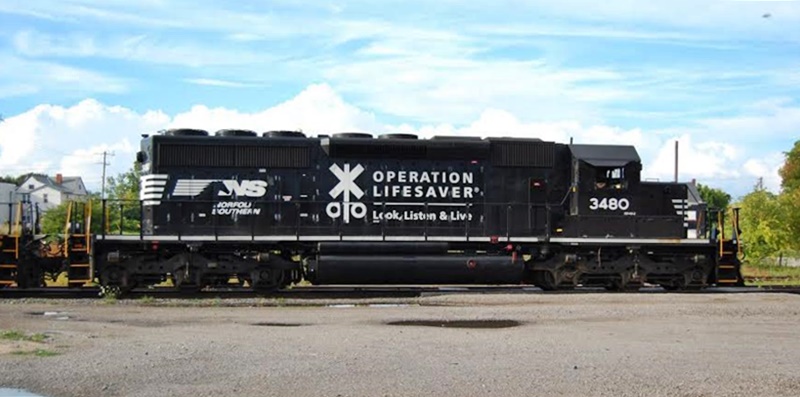
On September 20th, Cathy Wallace clicked RJ Corman 301 at Diboll, Texas. (DS4-4-750 c/n 74813, b/d 7/1950), she was built as Baldwin Eddystone Switcher 301, later upgraded to 800hp and sold to Weyerhaeuser Timber as #301. Sold to Southern Pacific as SP #1091 and then to Texas South-Eastern as #301, and finally to R. J. Corman as #301, their showpiece loco!
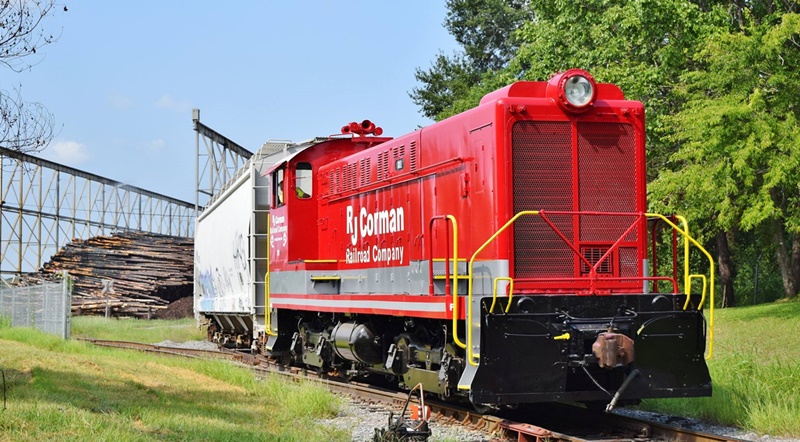
In South America former EMD-built Tunnel Motors in Brazil have been modified to I meter gauge and now ride on B+B trucks with extended frames! Very cool looking!
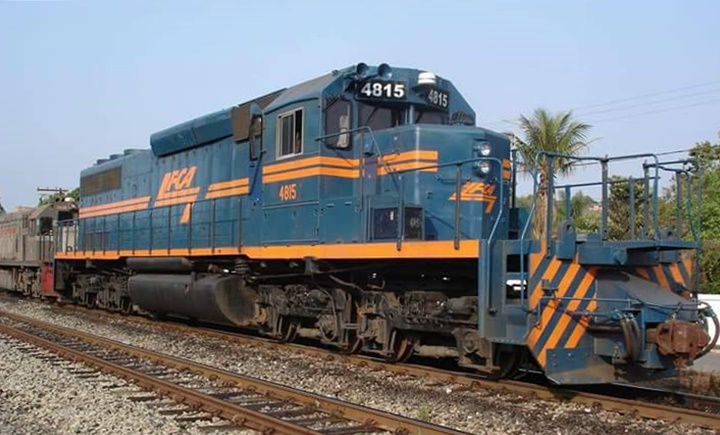
Burlington Northern Cascade green yard units BNSF 2088 and 1948 are sharing the tail track.
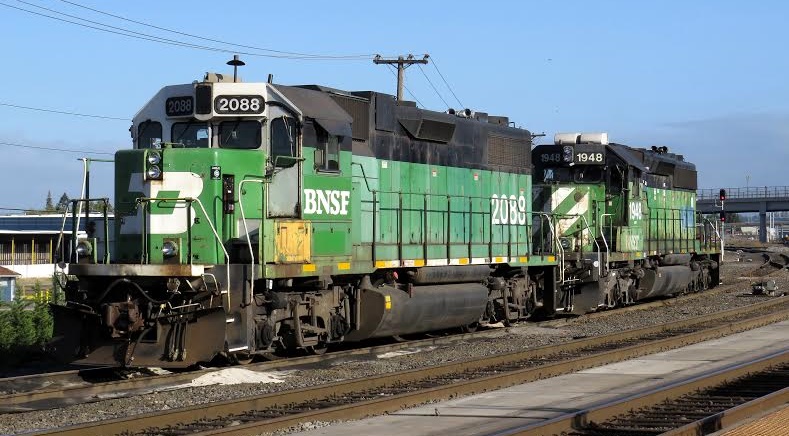
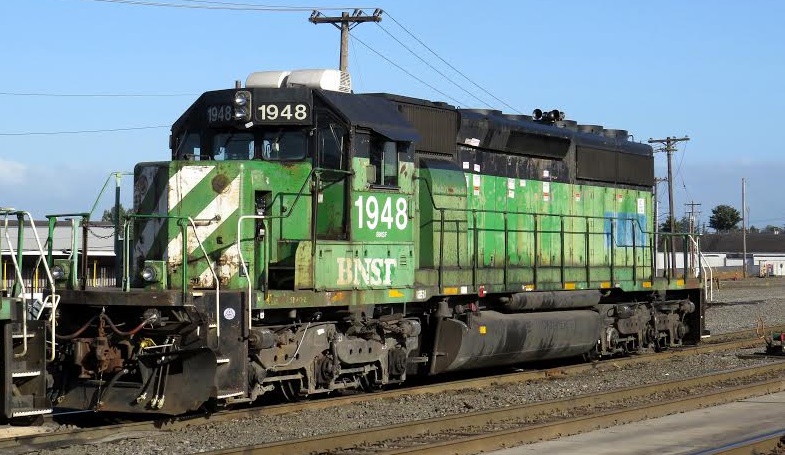
A BNSF Rivergate grain load down from Canada is easing through Vancouver Center as they will be stopping to put a yard crew on board. The 8130, 5444, 4023 are leading, with the 6610 as the DPU. This was a very unusual move as Rivergate trains normally come in from the east and have BNSF hoppers, where as this train came down from the north and had a train of leased hoppers.
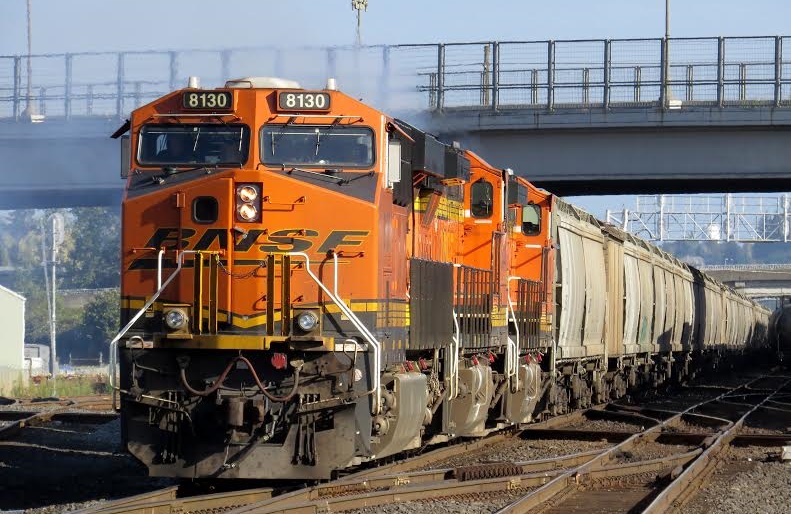
Would you like to see your photos here?
Send us your USA Vignette photos.
B&M/MEC/D&H/GUILFORD VIGNETTES:
Maine Central GP38 257 is leading freight 1/R-1 as it waits to cross the Boston & Maine diamond at Whitefield, New Hampshire protected by the last active set of ball signals (where the term 'High Ball' originated) during the 1970s. (Ronald Johnson photo)

Boston & Maine GP9 1720 and GP7 1575, bound for Berlin, have a clear 'High Ball' as they set out cars for the Maine Central at Whitefield, New Hampshire on July 22, 1976. (Ronald Johnson photo).
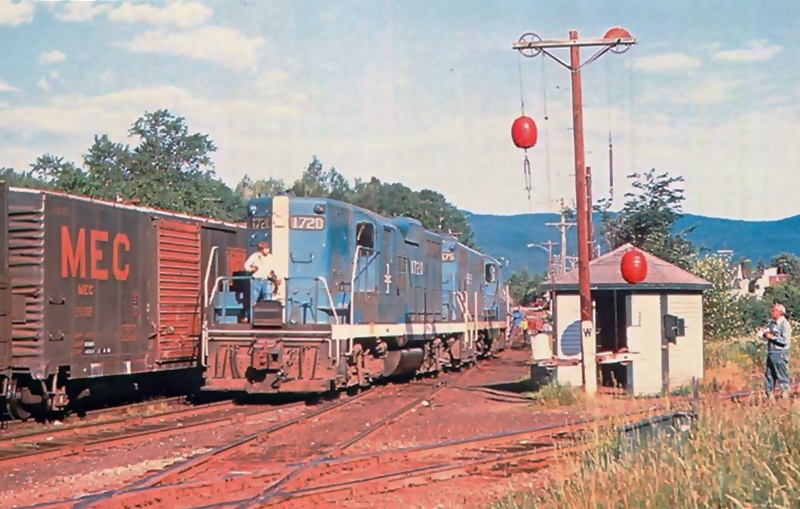
Back in 1962, Don Haskel shot these beautiful B&M GP9's and a low nose GP18 crossing Green River in Greenfield, MA with a priority freight.
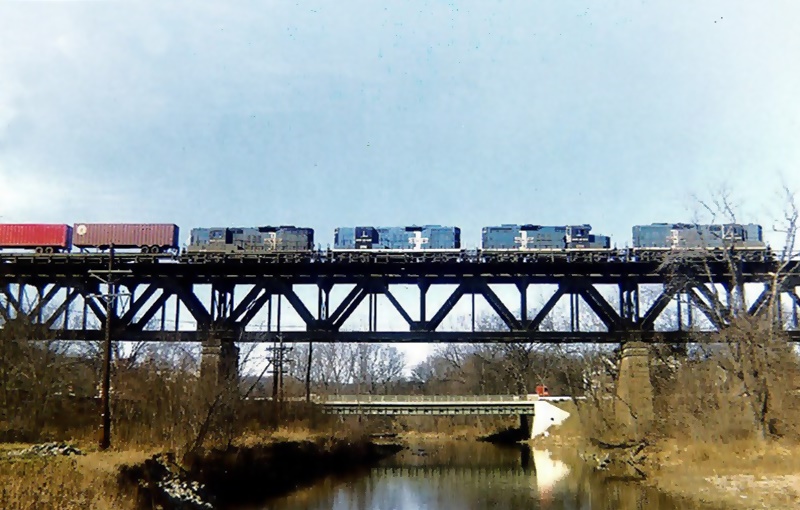
Scanned from postcard in my collection: Just before Guilford hacked up New England's railroads, a trio of new Boston & Maine GP40-2's are on their first run with symbol freight NE-1 (Rigby, Maine - Mechanicville, New York) at Newfield, New Hampshire on January 5, 1978. Ronald Johnson photo.
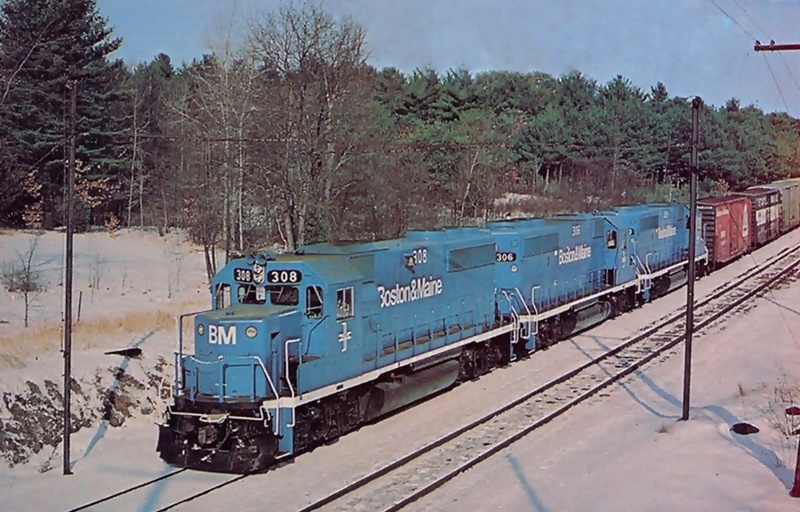
On November 7th, 1987, Doug Lilly shot some of the Maine Central's former Delaware & Hudson U23B's that were repainted into the Guilford scheme. Here former D&H 2307, freshly repainted, basking in some welcome but elusive November sun.
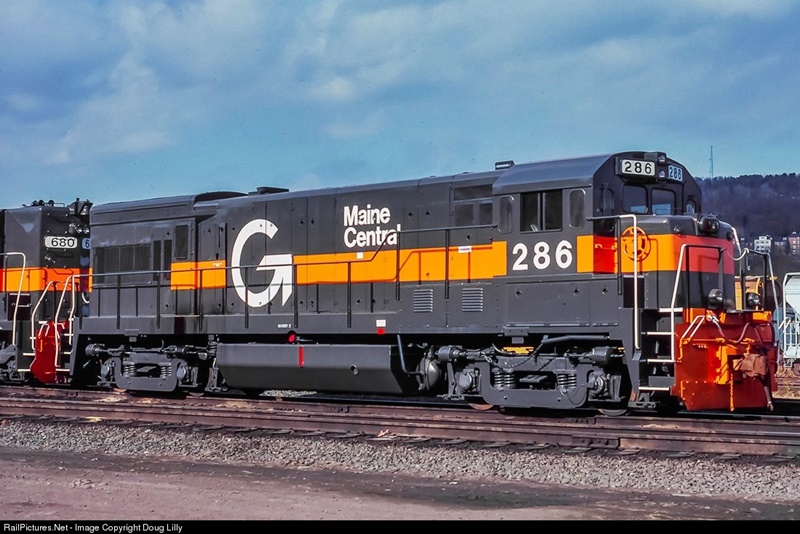
Westbound POPY with MEC (ex-Detroit Edison) SD40's 603, 600 and 601
Depart East Deerfield Yard in Massachusetts in 3/5/1986 (W.A. Gleason Photo)
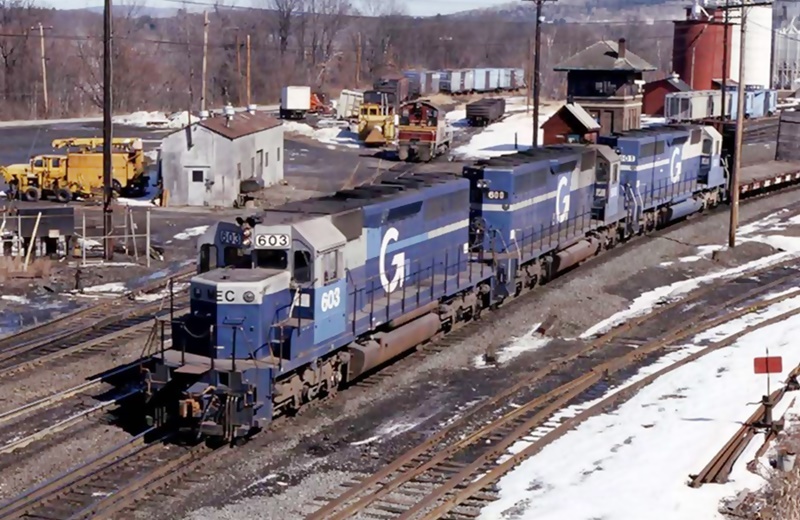
On July 18th, 1975 Richard Jahn photographed a group of four-axle D&H motive power hauling an Allentown. PA to Mechanicville, NY run-thru freight led by RS11 D&H 5012.
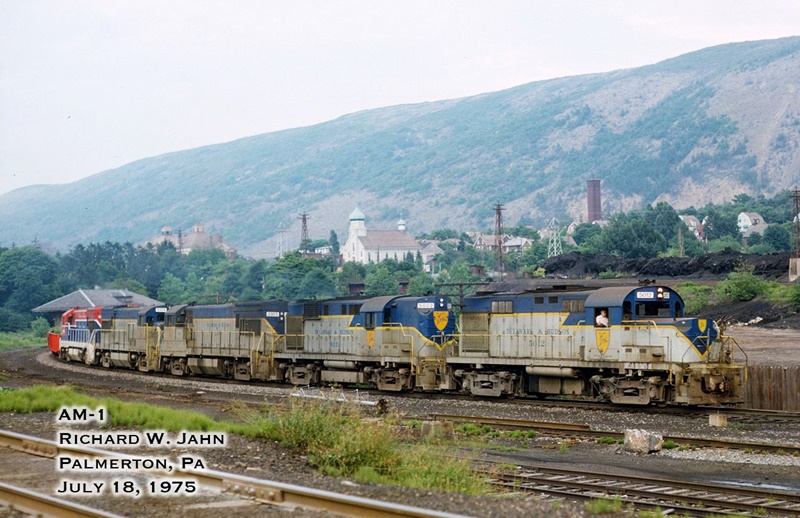
Click HERE to Submit Photos to South of the Border
Copyright CRO November 2016


